
20 minute read
The Information Super-Highway

Smart pavements have the potential to transform roadways into support platforms for EVs, autonomous vehicles and, also, for data services. How can road builders utilize this emerging technology, and what greater implications could there be?
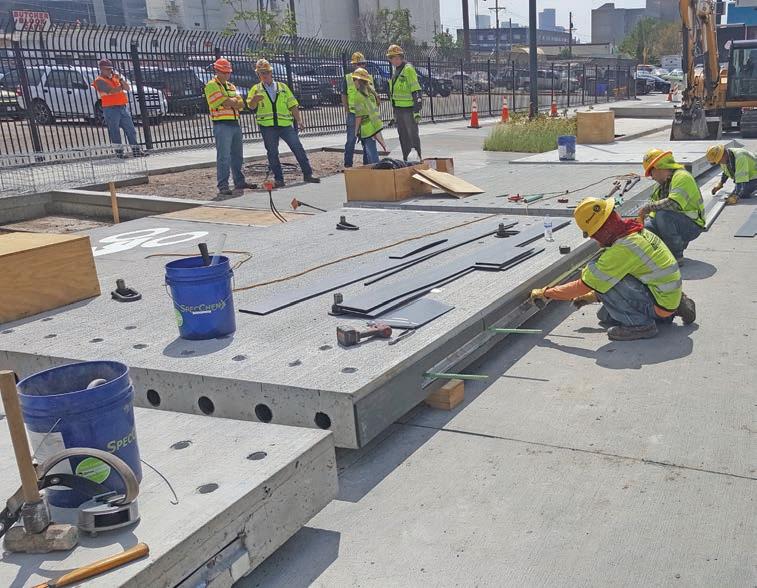
The Infrastructure Investment and Jobs Act (IIJA) was a landmark piece of legislation, the impacts of which will continue to unfold and be felt for many years to come. One of the various programs and funding initiatives it put in place was the Biden administration’s plan for a national electric vehicle (EV) charging station network. At first glance, this plan doesn't appear to have a large effect on the contractors’ and business owners’ direct on-the-job, day-to-day activities. However, as the country slowly shifts to a greater reliance on EVs, the charging station network alone may not be able to sustain the eventual number of EVs on the road. Other innovations and solutions will need to be developed and implemented if an electrified future is to come out from the realm of science fiction and into the real world.
It is precisely within this eventual and expected "gap" that smart pavements want to step into the conversation. Integrated Roadways provides merely one example of what is emerging as tool for connected cities. What are they? Well, they are probably pretty close to what you imagine when you consider other "smart" technology and devices on the market, which can likely be found throughout your home. It was probably inevitable; with the proliferation of smart TVs, smart watches, smart refrigerators, etc., it was only a matter of time before our roadways would become “smarter.” This concept and others like it, have been around for a lot longer than you may think.
A FUTURE WE REMEMBER The aspiration of intelligent roadways
Provided by Integrated Roadways
has an ambitious history. At the 1939 World's Fair in New York, General Motors featured its Futurama exhibit that astonished visitors with a vision of the "far future," where cars would navigate the highways at optimal speeds using automatic radio signals embedded within the roads themselves. It predicted this revolution would roll out by 1960. Incredibly, at the 1964 World's Fair, General Motors returned with a second iteration of the same exhibit, the "City of Tomorrow," with a forecast of a much more ambiguous timeline of the "near future." As was the case in 1939, visitors were delighted at the prospect of a world devoid of congested traffic jams and a possible an end to collisions.

SUPER-HIGHWAY

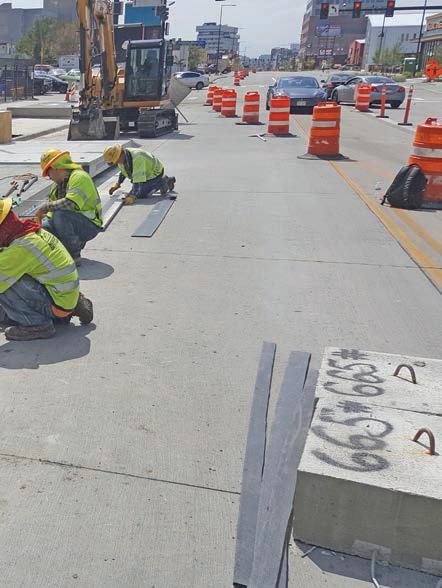
Brighton Blvd Installation
It's easy to see why this idea popped back up in a serious way in 1991 when the Intermodal Surface Transportation Efficiency Act authorized the U.S. Department of Transportation's (USDOT) Automated Highway System (AHS) development program.
The program resulted in a highly popular and successful demonstration in August 1997, which worked flawlessly on a segregated portion of the I-15 freeway over the course of four days. Further developments were scuttled less than a year later, when it was deemed too costly to continue in the face of other, more pressing concerns of the time.
The biggest takeaway from that experiment was that contemporaries indicated there were many “apparent and unknown complexities” that would require new technologies to adequately address. At best, a 2030 to 2060 timeline was floated as somewhat reasonable, but others doubted it would ever be feasible. While electronic sensors and embedded monitors have been in wide use for data purposes for decades, the mid-century utopian vision remains elusive. Here we are, almost caught up to the predicted timeline of the 1990s. How close are we, and how do smart pavements like those produced by Integrated Roadways factor in?
WHERE'S MY JETPACK?
It's clear to see the line that can be drawn from the futurist conceptions of technologically-advanced roads to today's smart, Internet-connected pavements. Seemingly, technology has progressed to a sufficient level to deliver on the promises of the last century.
Tim Sylvester founder, CEO and Chief Technology Officer from Integrated Roadways spoke to us about the products his company are currently supplying, how they might fit within a road building contractor's repertoire, and whether we are poised for a true paradigm transformation. Naturally, our first question was to get a fix on what these smart pavements really are. "Smart pavement is a modular, prefabricated paving system that contains sensors, communication elements, wireless charging, navigation and support for autonomy," he said. "It's all operated by a micro data center that lives at the edge of the unit and provides a host of telecom capabilities for current communications like Wi-Fi, 4G, and 5G." But, according to him, that's just the beginning of what these systems can do. "It also provides vehicle-specific things, like tire pressure monitoring systems, Bluetooth low energy systems, as well as being an integration point for IGS (Integrated Geotechnical Solutions) equipment, signals, digital signage and all of the other technology that means to live in the roadway. Really, it's converting the road into a managed service platform for next-generation mobility."
Let's step back a second and take a look at the Integrated Geotechnical Solutions (IGS) equipment that Sylvester mentioned and what it can mean for the industry beyond automation and EV charging.
According to their website, IGS is "A leading provider of monitoring systems, consultation services and risk management solutions...used in the construction, aggregate, subway, civil engineering, historic structures, mining and oil and gas exploration industries."
They provide services like compliance monitoring with turnkey solutions in the realms of surface cracking, dust, noise, soil movements, vibration, water and even weather. This made me wonder if the smart pavements were now smart enough, not only to communicate with the cars on the road, but whether or not this technology could benefit the road building industry in other ways.
IF ROADS COULD TALK
The plan for these prefabricated sections is to offer a broad range of applications,



including the roads telling contractors a lot more about their condition, erosion, performance and environment. Collecting precise data on traffic, weight, weather and more, the implications are pretty exciting. That's a lot of prospective technology going into the ground, but smart pavements are designed to mitigate some of that complexity in the way they’re designed and produced.
There are a host of potential benefits when systems like these are prefabbed, delivered on-site to be installed, rather than constructed on site. It becomes something any road building contractor could utilize.
Sylvester said, "It creates the opportunity to incorporate advanced technologies that are not feasible with site-based construction, due to the amount of time it takes, specialized labor, along with traffic and environmental concerns and risks."
The end result is a series of sensitive instruments that can take all these measurements, all these various data points previously mentioned, and turn them into useful probability models and, even more importantly, pavement condition index models.
At one end of the spectrum, it can be used to create predictive maintenance models that apply, not only to the section of the road where the prefab nodes are installed under the road, but, it can be applied to the surrounding roads connected to it.
At another point on the spectrum, the data can be utilized in the dynamic flow of traffic when connected to an automated traffic signal system. It is a large leap past the traditional methods of traffic monitoring. Sylvester explains how it works, "What we can do is take the entire local or regional network and feed that into a real-time traffic flow map that constantly adjusts the signal phases for the connected signals in order to provide those green light corridors and keep clumps of traffic flowing together as a group. It can make adjustments for leaders and stragglers, and prevent conflicts with cross traffic."
Both of these possibilities combined underlay a powerful tool for road builders and road construction contractors. When the traffic data about regular day-to-day patterns is taken into account and used alongside the maintenance modeling, it becomes a lot easier to plan detours, re-routes, lane closures and other adjustments for maximum efficiency. Contractors can have a better understanding of what drivers are doing on what days of the week, and know more precisely when the work will likely need to be done.
By showing the actual breakdown of traffic over time and by location, contractors can make decisions based on what's going to minimize the traffic impact. Planners can optimize construction phasing and the sequencing of when to do different lanes,just by having a better understanding of what traffic is where and when.
While not necessarily a one-to-one realization of GM's fantastical "City of Tomorrow" showcased in the 1960s, it definitely seems to have plenty of varied uses, and we haven't even talked much about the way it can wirelessly transmit electrical charge to EVs. That's arguably what opened the door to this conversation, and our interest in the technology as a concept, only to discover that it could offer a lot more on the back-end for contractors and city governments.
However, like all technological advances, it would be irresponsible to avoid deeper questions about other, less-obvious implications all this new data creates.
A GREAT BIG BEAUTIFUL TOMORROW
There's a catchy song that plays during the “Carousel of Progress” ride at Disney World, a stage show that looks at the amazing technological history and advancement over the last century. It felt pretty dated even when I was growing up in the 1990s, but the final act of the show is a vision of the near future, what's “just around the corner.”
It shows examples of the kinds of tech you might imagine: virtual reality video games, advanced computers and even smart kitchen appliances. These are all things that we actually have in our homes today. What they don't sing about in the final verse, however, is how data collection and privacy issues would rise alongside these amazing advances, almost like its dark shadow.
Every new device that tech companies bring to market comes with two price tags. One is the upfront cost you charge to your bank account, and the second, and much more lucrative, is the vast sea of data the new, convenient software or device will collect about you. The most notorious of these, and the ones we are most dependent upon, are our smartphones. They are the closest analogue to the potential for data gathering, and its value to third parties, when it comes to what smart pavements could potentially know about you. This isn't to say that smart pavements are a bad idea.
As we've covered here already, they have a whole host of benefits to offer. Every person with an iPhone or Android in their pocket makes a decision everyday that the exchange of their data for the use of the device is acceptable, if not unavoidable. It is conceivable that between our smarter cars and smarter roads, a new data gold mine could be available for companies like Starbucks or McDonald’s, or even law enforcement, to access and exploit the same data that is a helpful tool to contractors and city managers. The data and its collection isn't inherently bad, of





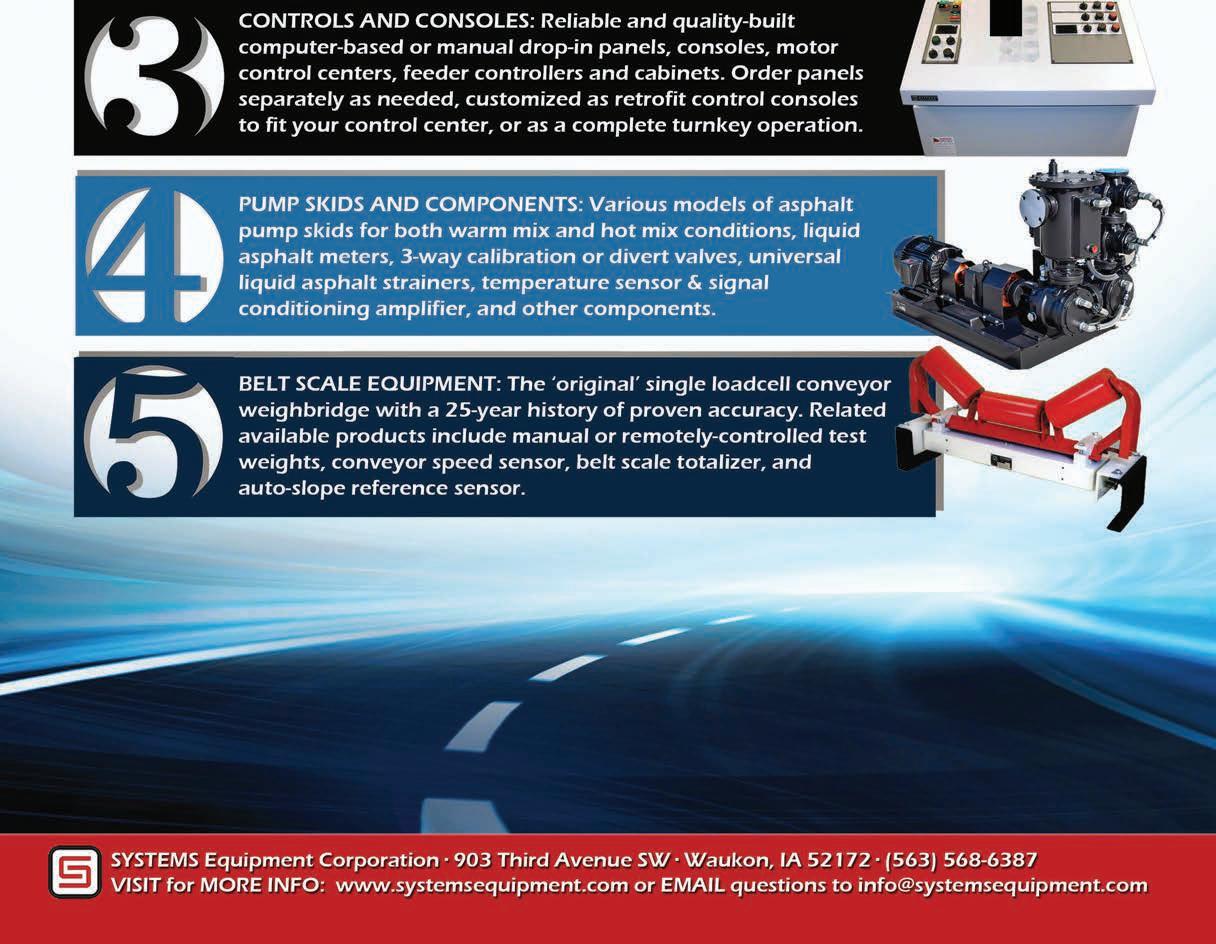
RI-





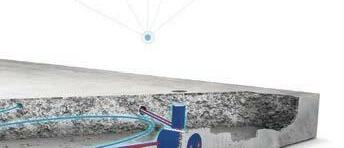

course, but who is going to use it and to what end?
He explained, "When we do a contract with a public agency, we include in that contract a requirement that we cannot collect personally-identifiable information. We designed our system so that it does not know who you are. It makes inferences that are not attached to an individual person."
That's a good thing to know, and a great policy to have in place. However, Sylvester went on to explain just how compelling the data can be, even without the inclusion of your identity. "The level of data that we can provide has an immense amount of value, even without knowing you as a person. We can get everything that's relevant without digging in beyond that," Sylvester said. "We can tell you what kind of vehicle it is, the make and model. We can even provide a demographic and socio-economic profile. That's a probabilistic model of who it might be, based on the population, ownership, and census details. We don't need to know an individual in order for the information to be useful. We really only need to know general characteristics so that we can build marketing audiences."
If we are going to realize a future where EVs are the dominant form of personal transportation, we will need smart pavements or something similar to them. This is even more true when it comes to the type of support that fully autonomous vehicles will no doubt require. But these questions and issues should be in front of contractors as they figure out how to utilize, implement, or offer smart pavements.
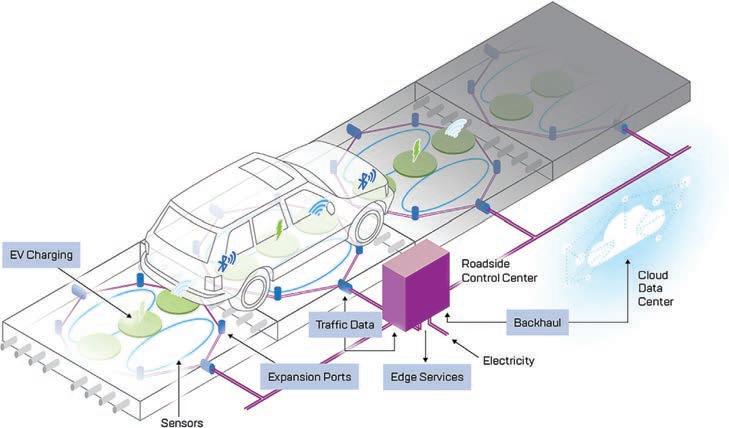
FROM CONCEPTUAL TO APPLICABLE
Security and privacy issues aside, there is a lot of applicability here for road building contractors, and the ability to be ahead of the curve in some areas. We asked Sylvester what he thought about the uses asphalt paving companies could have for what is essentially a precast concrete slab.
According to Sylvester, "Asphalt still has quite a large role to play in this environment. It's common to use asphalt as an underlay for precast, where you partially compact the asphalt and then you lay the precast down on top. Then we can just pull it out to reach the utilities underneath, which is why we think this is a great way for asphalt contractors to adopt wireless charging, because it helps them deliver what public agencies need without creating the unnecessary headaches. You really only need small segments of it right now. You might put it in an extremely high traffic area, such as immediately behind the stop bar of an intersection. It's not uncommon to have asphalt roads with concrete intersections.”
Asphalt contractors know how to build roads, they do a fantastic job and smart pavements potentially provide a means for contractors of any stripe, to be able to add new technologies to the roadways they build without significant new investment on their part. It does possibly create significant new business opportunities to get involved in the future of mobility related to connected, electri, and autonomous vehicles.
Charging Station Alternatives
Above ground, standard charging stations cannot feasibly act as the sole solution to EV needs. There are situations where they are impractical, such as in larger cities and densely populated areas where owners might not have garages to install home chargers or where they might be subject to damage out in the open. These are real equity gaps for EVs that aren't just their mostly prohibitive retail costs.
The prospect of installing segments of wireless charging areas in the roadways makes it much more possible for people to access future electric vehicles, even if they don't have the ability to plug in where they live. Another benefit is that the system is completely invisible and effectively impervious to vandalism or the elements.
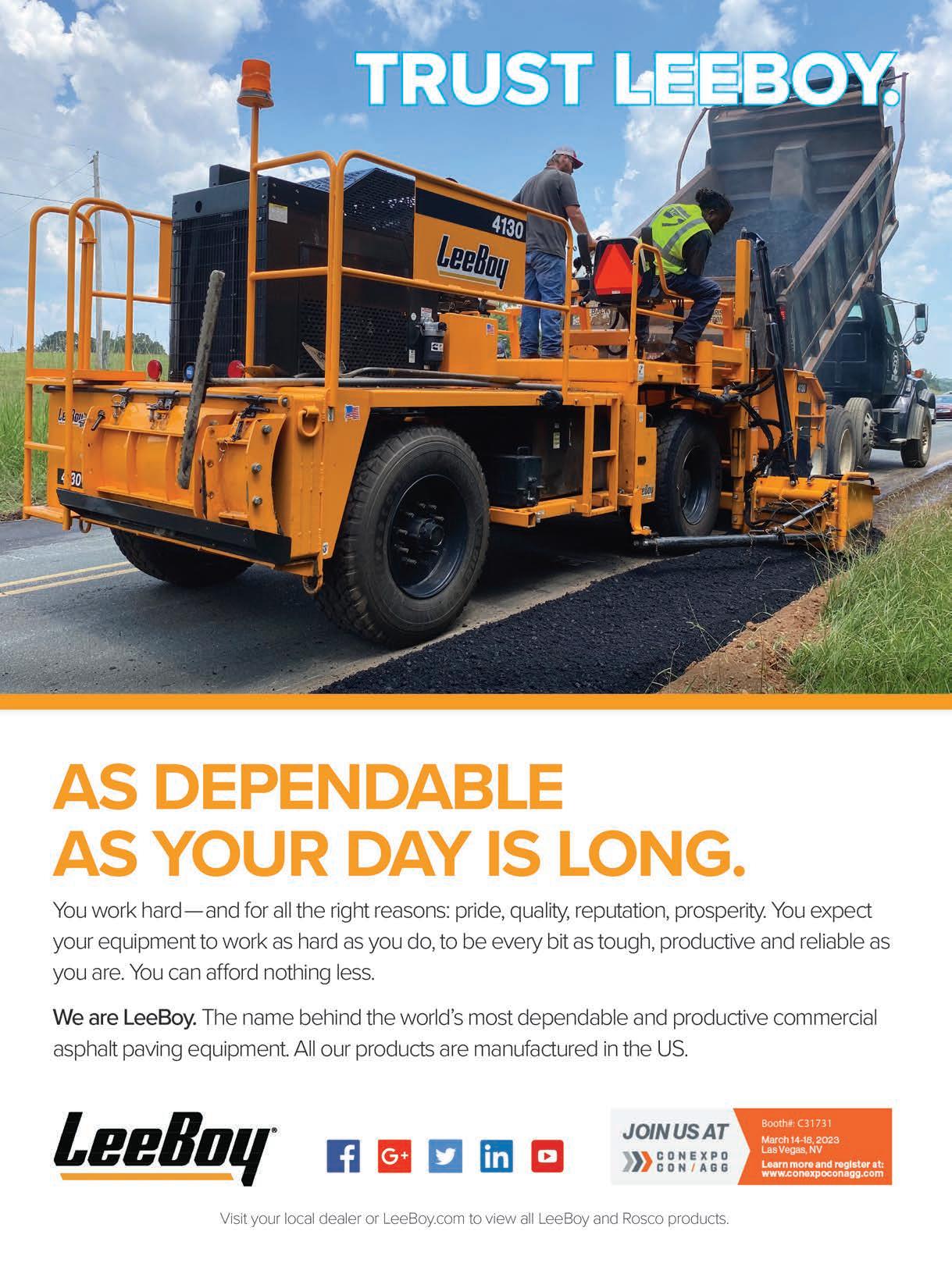
What About the Grid?
Since the announcement of the national EV charging station network plan, there's been a lot of fuss and grumbling over the current state of the power grid and it's ability to take on a growing fleet of electric vehicles in the United States. It's a fair question when states like Texas are experiencing rolling blackouts and issuing requests for citizens to utilize less A/C in the middle of the summer. Despite that reality, it appears that the EV demand would, on average, be mostly negligible.
According to a report by ClimateNexus the current U.S. fleet of approximately 2.5 million EVs uses less than .5% of the total energy output in 2021. Even if the number of EVs jumped 80%, it would only lead to an increased demand of 10%-15% on the grid. In addition to that, global electricity supply is projected to increase by at least 60% by 2026.
Smart pavements are currently designed to tie into local electrical grids, but according to Sylvester, "They can be deployed anywhere it can benefit a community, and the core power draw is relatively low, which means that the system is agnostic to the source of its power. We believe that roadway power demands can — and should be — fully sustainable, especially as project sizes start to grow large enough to justify more innovative approaches."
Who Foots the Electric Bill?
The plan for many smart pavement design systems describe a world where those with traditional gasoline-powered vehicles will continue unaffected by the charging system (data collection will likely still be a factor even in non-smart cars). However, if you want to charge your EV at the red light, it will come in the form of pay-per-charge. That would take the form of a subscription service where the amount of charging your car receives is billed to your personal account.
THE MATRIX OR THE JETSONS?
Here at the end, reflecting on all the open questions and ideas that this product and concept make one consider, I want to speak more directly and plainly. I feel that's fair, if you've made it this far into a rather lengthy article.
Perhaps, I can leave you with a few thoughts to chew on for yourself rather than telling you whether or not a future of smart pavements is good or bad. That's not for me to decide anyways. That would be like trying to say whether an excavator was good or bad — they're just tools.
As it concerns the wireless charging aspect, I've already said and will reiterate here, it is likely an inevitable need if we are to overcome climate change and reduce the use of carbon based fuels. They could power not only our personal cars but charge electric public transportation. Likewise, as autonomous vehicles continue to improve, their success will
JOIN US AT


CONEXPO-CON/AGG
MARCH 14-18, 2023 LAS VEGAS

CONEXPO C O N / AG G



BOOTH #: C31332
Learn more and register at: www.conexpoconagg.com

#CONEXPOCONAGG #CONEXPOCONAGG2023
Bearcat BC-502 Distributor

Etnyre Var. Width Chipspreader


RES PavementSaver II
only be further enhanced when they are able to communicate with the road itself. These are both net positives.
But something is still sticking in my brain about the "connected" nature of this platform, that I just can't shake. These final thoughts don't have to do so much with the road building or the contractor side or things, so I understand if this is where you decide to dip out.
When I was growing up in the 1990s, the Internet was coming into its own, and you needed to actually "log on" to use it. People referred to it as the "Information Super Highway.” That felt evocative. In retrospect, it felt like an exciting new tool. Now, it's such an integral part of our daily existence, and sometimes it seems like the tool we once used, has been turned around and pointed back at us.
Powerful and wealthy forces found ways to monetize and capitalize our every tap, glance and scroll. Our habits, our likes, our choices and our movements about the web are bought, sold and traded invisibly between corporations looking to sell us something. If we knew what it would be like, would we have safe guarded the Internet's development as it matured into what it is today.
Perhaps we should pay attention, be involved, advocate for stronger personal data and privacy legislation. If I had to describe what the digital side of our world is like, I'm not sure I would use the language of a technological utopia. The exciting and optimistic ones that futurists once used to dazzle people with at the World's Fair. At times, it can seem more like a dystopia from some a sci-fi novel or film.
Personally, I don't enjoy the possibility of advertisements being pushed to the console screen of my car when the sensors detect I'm at a stop. No one is saying that's the plan, but if I'm considering it, you better believe that a marketing strategist for Arby's or Amazon is. If I was working for McDonalds, I'd want to take this road data, pair it with the phone data, and direct potential Big Mac consumers to my drive-thru with precise wait times and coupons connected to the car itself.
It’s also concerning how law enforcement or other agencies might abuse their authority to peer into the data, or use algorithms and probabilistic profiles inappropriately. It's already happened with phones, cell towers and geofencing.
Despite all this, there are legitimately high hopes about smart pavement's positive potential. However, who would say that they like the way you have to watch badly-produced TV commercials while standing outside, pumping your gas? You know what I'm talking about. So, I'm dubious about where that ad-spend will go when people don't need to pump gas anymore.
RIGHT RIGHT RIGHT RIGHTValve RIGHTPrice RIGHTNow!Price Now!
Dependable, Economical, Available …
Since 1892, Homestead continues to be the most reliable manufacturer of asphalt valves. With cast iron and ductile iron material options, we offer a complete source of valves for any liquid asphalt application. Our full line of hot-jacketed 2-way shutoff & 3-way diverter valves provide a ready solution to meet your flow requirements. Homestead’s cutting-edge actuation design allows you to easily add actuators to your existing Homestead valves, in-line, without modification. Our fully stocked warehouse of valves and actuators offers you security in knowing that the valve you need is only a phone call away.


THE ASPHALT VALVE EXPERTS

Valve Types
Full Port – Standard Port 2-Way Shutoff and 3-Way Diverter Patterns 1"-8" Flanged and 1/2"- 4" Threaded Steam/Hot Oil Jacketed Transflo Plug Proportioning Plug
Valve Materials
Cast Iron – to 450° F Ductile Iron – to 650° F High Temperature Seals
Actuator Types
Pneumatic Electric Open-Close Modulating
610-770-1100 asphaltvalves.com
Fax: 610-770-1108 sales@homesteadvalve.com
©2023 Olson Technologies, Inc.

